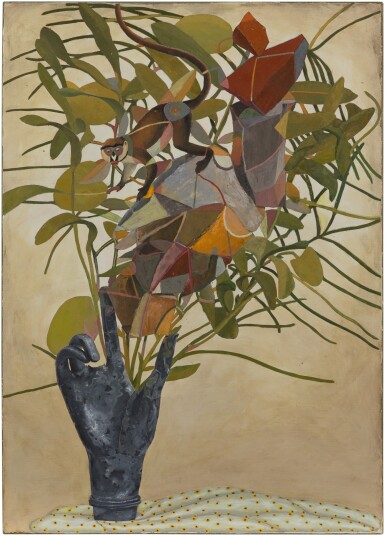
Bazil Duliskovich
Hortus Magicus
Lot Closed
April 7, 12:02 PM GMT
Estimate
8,000 - 12,000 EUR
Lot Details
Description
Bazil Duliskovich
b. 1969
Hortus Magicus
signed, titled and dated 2020 on the reverse
oil and mixed media on canvas
140 by 100 cm., 55⅛ by 39¼ in.
Budapest, Blitz Gallery, Bazil Duliskovich and Noon Azaki, 2020
Budapest, Blitz Gallery, Bazil Duliskovich, November 2020
Budapest, Blitz Gallery, Bazil Duliskovich, 2021
London, David Kovats Gallery, Bazil Duliskovich, June 2021
“...Resettling in Hungary in 1991, the artist did not find his contact points to traditions in the current condition or traditions of Hungarian painting at that time but rather in an artistic direction taking care of and further shaping a specific tradition of figurality, whose most reputed and most characteristic representative was the London school that worked completely disregarding the mainstream of modernism for decades. That is where his special way of using figures derives from, an approach demolishing the integrity of body and face and the collage-way composition apparent in his first pictures. (Francis Bacon rightly refers to Picasso’s cubist figures which, by infringing the integrity of bodies, caused fine arts to branch out in two directions: ‘objectlessness’ and the complete liberalisation of depicting bodies.) Duliskovich’s early pieces of art are remotely related to the works of R. B. Kitaj, Francis Bacon, the American new painting or, for instance, Gino de Dominicis.
Another main source of Duliskovich’s art is the tradition mediated by icons and traditional Byzantine painting, i.e. by an art with an anthropomorphism deriving from the doctrine of Christ’s embodiment, with an ascetic ideal developed against the tradition of antique sensuality, with the spiritual abstractness of icons and with their static nature serving for contemplation. Duliskovich brought along all that with the visual culture encrypted in his memory during the first twenty years of his life spent in his homeland, to frequently incorporate those features into his artistic mother tongue unconsciously.”
(László Kertész, 'Palimpsest: The Art of Bazil Duliskovich', 11 May 2005, online)
You May Also Like










